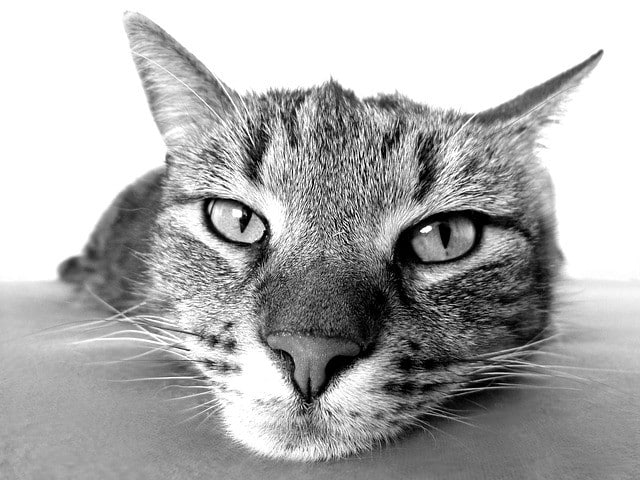
When a cat has a seizure, it can be traumatic for everyone involved. Your cat is usually unconscious during the episode, so they don’t suffer from the ill effects. There are many things that cause cat seizures, and it is your responsibility to be aware of the signs.
What are cat seizures?
Cat seizures are also known as focal seizures or idiopathic epilepsy. They temporarily cause physical attacks on the body that come in sudden bursts. These are uncontrolled, so to onlookers seizures will look a lot worse than they are.
What makes idiopathic epilepsy confusing is that it happens for unknown reasons, at least until further tests are done. Since attacks can’t be predicted, the nature of the movements will take you by surprise. The seizures are more common in dogs, but can still afflict cats of any breed.
Symptoms
Sometimes you can see the beginning of a seizure. Cats will often look dazed or frightened before it happens, and may even seek your attention. This is important to notice since the effects take place quickly afterwards.
A good description of this moment is when they’re experience a focal onset. Once you see the look the first time, it is hard to forget. The ages most affected by the symptoms range from two to four years old. Idiopathic epilepsy is a lot different than your cat twitching while it is sound asleep.
Causes
Unfortunately, the cause of this condition is unknown. There is a shortlist of possible causes, and most of them have to do with neurological problems. Epilepsy in pets is just as complex as it is for humans.
Even without knowing the cause of the seizures, there is still a way to care for your cat and prevent further attacks. Care instructions are well thought out and will ease the mind of any cat owner. The first attack is always the scariest, and is over long before you make it to the veterinarian. Even so, the information provided about the first attack is valuable.
Prevention
Brain disorders you can’t control, but environmental ones are fully within your power. If your cat has hypertension, then it needs to be treated immediately. Hypertension that is ignored can develop into a chronic condition, of which one of the side effects is seizures. Exposure to antifreeze can also cause problems, and can be extremely toxic to cats.
One of the surprising causes is related to medicinal applications. Using medicines intended for dogs on a cat can cause seizures. Harmful medicine to cats also extends to human prescriptions, which curious pets can find their way into. All of these are preventable causes of seizures that are fully within your control.
Short and long-term effects
The short-term effects of cat seizures is loss of balance. With some cats, you will notice they are slightly unsure of their balance. This happens until the effects wear off, but can last for a substantial time after the attack.
The long-term effects of cat seizures are a little more serious. Some pets are not emotionally equipped to deal with multiple episodes in a month. Behavioral patterns will present themselves, and you’ll be forced to intervene. Every cat reacts differently to an attack, with no way to tell how they will recover emotionally.
Diagnosing cat seizures
Veterinarians can’t run specific tests to find the cause of a first-time seizure. Even if they run the normal gamut of examinations (blood, MRI, CT, etc.) the tests will come back normal.
Outside influences like toxins or dietary concerns are easier to pin down, and may be the cause of some seizures. But without knowing what to look for, veterinarians must rely on secondary episodes or other side effects. It is still important to follow all instructions given by a doctor when seizures become a problem.
The bottom line
A single event is nothing to get worried about. The real problem is when it happens multiple times, and you are left wondering if the seizures are a chronic condition. Instead of letting it get to that point, take your cat to the veterinarian. It is better to knock out the problem early before it becomes something that causes permanent harm.





